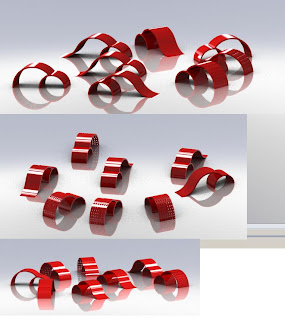
The last couple weeks can be characterized by one word: iteration. In preparation for this week's design competition, each of us has been actively mocking up designs and making models, both physical and digital. You can see the fruits of our labor in the above poster, but it was quite the process getting there. Early last week we were still toggling between geometric themes but ultimately - based on feedback from the one-minute madness - decided to focus on the arch and see what we could come up with. After an inspired meeting last Thursday, we came up with an idea involving arches, climbing, and mesh. Here are some images from the first iteration:



After considering our budget and resources further - and after feedback from Claudia discouraging the use of mesh - we decided to simplify even more and focus on just a few kinds of arches. This would reduce the number of molds we would need to make. Jonathan's class workshop about fiberglass was key in guiding us toward this decision. Here are some images from our next iteration:



At this point, we knew what kind of shapes we were using and basic interactions - arches to form slides, climbing, crawling through tunnels - but had not finalized on a technology concept. After much back and forth discussions, we ultimately decided on putting infrared sensors into the climbing holes that would activate LED lights to turn on or off. This would be visible from beneath the arches or, since the LEDs would be in the holes, fairly visible from the outside. We thought this could encourage individual and group light games and a form of "light graffiti".
From there, we delegated tasks. We had a clear idea of the kind of shapes we were working with and needed to complete the other components for the design competition. Each of us took a role: poster design, poster text, budget, concept finalization, and model construction. We really needed to know the budget to see just how much would be possible for 24 modules and whether we needed to adapt the design. We came back together and discussed the budget, determining would go over at about $4,800. However, given our constraints for 24 modules, we were uncomfortable reducing our design, or buying less fiberglass and weakening the structure. Ultimately, we decided to create two budgets, one ideal and the other reduced. Some images from iteration 3, the final iteration before the competition:



Scroll back to the top to see the final design poster.
One thing we were proud of was that it was really everyone's input that contributed to the final design. Go Team NameTeam!
No comments:
Post a Comment